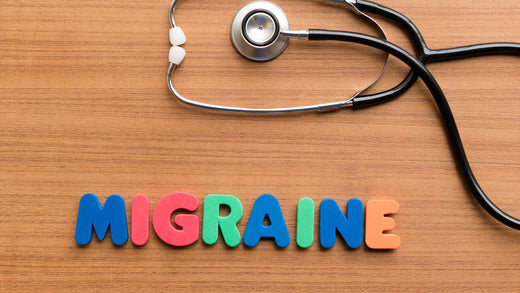The Science of Migraine Relief: Say Goodbye to Pain, Naturally
Migraines are more than just a headache—they’re a full-body experience that can leave you feeling powerless. For those seeking effective, drug-free solutions, hot and cold therapy is a game-changer. In this article, we’ll unpack the science behind these therapies, explore why they’re so effective for migraines, and introduce you to the ultimate migraine management tool: migraine relief caps.
Quick Question: How do you Manager your Migraines?
Think about the last time you had a migraine. What did you do? Did you:
- Take painkillers and hope for the best?
- Retreat to a dark, quiet room?
- Power through the pain (unsuccessfully)?
The truth is, everyone handles migraines differently. But not all remedies work equally well, and over-relying on medication can come with side effects. That’s why hot and cold therapy has become a popular, non-invasive alternative. Let’s dive into why it works.
What are Migraines, Really?
Migraines are a neurological condition, not just “bad headaches.” They often come with:
- Intense, throbbing pain (usually on one side of the head).
- Sensitivity to light and sound that can make even minor noises unbearable.
- Nausea and vomiting, adding to the discomfort.
- Visual disturbances, like auras or blurry vision.
These symptoms can last anywhere from a few hours to several days, making migraines a major disruptor of daily life. Triggers vary, but common ones include stress, dehydration, hormonal changes, certain foods, and lack of sleep.
Understanding migraines is the first step toward managing them effectively. And this is where hot and cold therapy comes in.
Why Hot and Cold Therapy works like Magic ?
Hot and cold therapy has been used for centuries to manage pain and inflammation. But how does it work for migraines?
🧊 Cold Therapy: Chill the Pain
Cold therapy is like hitting the "pause" button on your migraine. Here’s how it helps:
- Reduces Blood Flow: Cold constricts blood vessels in your head, easing the throbbing pain caused by dilated vessels.
- Numbs Nerve Endings: The numbing effect reduces the perception of pain, giving you instant relief.
- Calms Inflammation: Migraines often involve inflammation, and applying cold can help soothe this process.
When to Use Cold Therapy: It’s most effective at the onset of a migraine. As soon as you feel the tell-tale signs (like visual auras or mild pain), applying cold can help stop the migraine from progressing.
🔥 Hot Therapy: Relax the Tension
Heat therapy is all about relaxation. It works by:
- Relaxing Muscles: Many migraines are triggered by tension in the neck and shoulders. Heat helps loosen these muscles.
- Improving Circulation: Heat increases blood flow to tight areas, promoting faster recovery.
- Reducing Stress: Heat therapy can have a calming, almost meditative effect, making it ideal for stress-induced migraines.
When to Use Heat Therapy: Heat is best for migraines caused by muscle tension or stress. It can also complement cold therapy for a well-rounded approach.
Your Ultimate Solution: Migraine Relief Caps
If you’ve ever tried balancing an ice pack on your head or microwaving a heating pad, you know it’s not exactly convenient. That’s where migraine relief caps come in.
What Are Migraine Relief Caps?
Migraine caps are wearable, all-in-one solutions designed to provide consistent hot or cold therapy. Think of them as your personal, portable headache clinic. Here’s why they’re so effective:
- 360-Degree Coverage: Unlike traditional packs, these caps wrap around your entire head, targeting pain from every angle.
- Customisable Therapy: Need cold for swelling? Or heat for tension? Many caps allow you to switch between the two with ease.
- Hands-Free Relief: You can wear the cap while resting, working, or even running errands.
- Durability and Reusability: Made with high-quality materials, migraine caps are built to last, making them an eco-friendly alternative to disposable packs.
How to Use:
- For cold therapy, store the cap in your freezer and apply at the first sign of a migraine.
- For heat therapy, warm the cap in the microwave and use it to relax tense muscles.
How do combine Hot and Cold Therapy?
For maximum relief, try alternating between hot and cold therapy. Here’s a quick guide:
- Start with cold therapy to reduce inflammation and numb pain.
- Follow up with heat therapy to relax muscles and promote blood flow.
- Repeat as needed, ensuring you give your skin a break between applications.
This alternating method is especially effective for migraines with mixed symptoms, such as throbbing pain and muscle tension.
Let's Talk Prevention: Lifestyle Strategies That Work
While hot and cold therapy can work wonders during a migraine, prevention is always better than cure. Here are some additional tips:
- Track Your Triggers: Use a migraine diary to log foods, activities, and other potential triggers.
- Stay Hydrated: Dehydration is a common migraine trigger, so make water your best friend.
- Sleep Smart: Aim for a consistent sleep schedule to keep your body’s rhythms in check.
- Manage Stress: Try mindfulness, yoga, or deep breathing exercises to lower your stress levels.
Combining these lifestyle changes with hot and cold therapy creates a holistic approach to migraine management.
The Bottom Line
Migraines may be a part of life, but they don’t have to control it. With hot and cold therapy—and the convenience of migraine relief caps—you have powerful tools to take back your day. Whether you’re managing occasional headaches or chronic migraines, relief is within reach.
So, what are you waiting for? Give hot and cold therapy a try and see the difference for yourself. Your path to pain-free days starts now.





